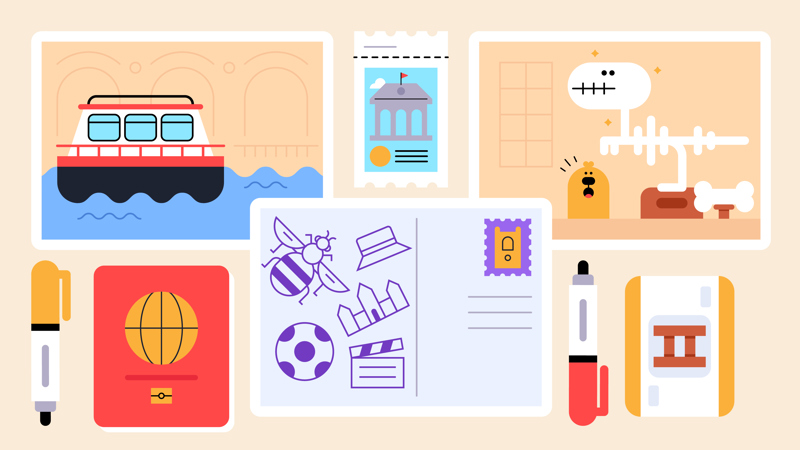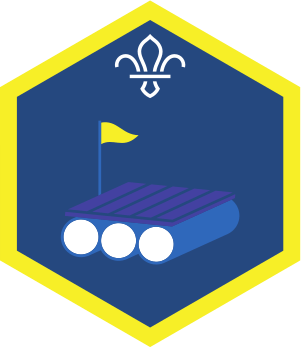
Wish you were here
You’ll need
- Coloured pens or pencils
- Camera or phone
- Postcards
- Local map
Before you begin
- This activity is fun to do together, but is also great for people to do at home, especially over a holiday break. It’s up to you how you do it.
- It’s also up to you whether you buy plain postcards to decorate or ones from the place you visit.
- Invite extra adults (such as parents and carers) to come and help.
Plan a visit
- The person leading the activity should choose a local place of interest that people may not have visited before. They could ask everyone where they’d like to go.
- The person leading the activity should plan the visit carefully. They should plan the route of travel and do a risk assessment.
Head out
- Everyone should travel safely to the place or event
- Everyone should learn five new things during the visit. They could hunt for interesting facts, take some time to make observations, or talk to people to learn from them.
- Everyone should collect any souvenirs – they may be able to take photos or draw pictures. They may also have tickets or leaflets. The person leading the activity may help people to buy a postcard, if that’s what they’ve decided to do.
Write postcards
- The person leading the activity should give everyone a postcard.
- If the postcard is blank, everyone should decorate it with things from the visit. People could draw or stick on photos, sketches, or souvenirs such as tickets.
- Everyone should write or draw the five facts they learned. The people leading the activity should help people remember their facts.
- Everyone should look at the facts they’ve learned together.
Alternatively, do it at home:
- The person leading the activity should ask parents and carers to help their young person to visit a new place of interest. They should let them know when they need to visit by.
- Everyone should visit somewhere new and find out five facts.
- Everyone should buy a postcard and draw or write the five things they’ve learned.
Reflection
This activity needed everyone to use their communication and observation skills while visiting somewhere new. Why is it important to visit and learn about new places? In pairs, people should take turns to show each other their postcards. They should tell their partner something that surprised, interested, or amazed them. What would people say to someone who was thinking of visiting the place they went? What do they need to know to understand the place?
Safety
All activities must be safely managed. You must complete a thorough risk assessment and take appropriate steps to reduce risk. Use the safety checklist to help you plan and risk assess your activity. Always get approval for the activity, and have suitable supervision and an InTouch process.
- Outdoor activities
You must have permission to use the location. Always check the weather forecast, and inform parents and carers of any change in venue.
- Phones and cameras
Make sure parents and carers are aware and have given consent for photography.
You could involve everyone in planning the visit – they could look at route maps, think about snacks and water (and decide who’ll carry what), and count the money for the postcards.
Make sure your trip is accessible to everyone – you may need to contact the place you’re visiting to check details. If you go on a trip together, anyone who can’t come could go in their own time with the people who look after them. It’s up to you whether you go on a trip together or ask people to do it in their own time – you know what’s best for your group.
All Scout activities should be inclusive and accessible.
Find out more about the place you visit by researching online; this could count towards the Digital Citizen Staged Activity Badge.
The group could help choose where they want to go.


